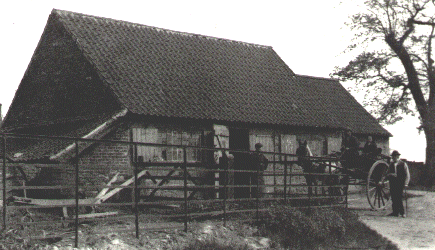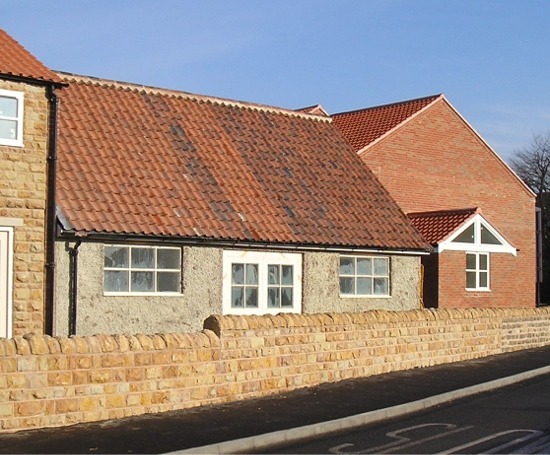Life in Victorian Papplewick
July 1838 – On Coronation Day, the inhabitants of Papplewick had a hot dinner of roast mutton and lamb, rabbit pies etc. Upwards of 100 gentlemen sat down to dinner, and about the same number of ladies took tea afterwards. They had a splendid show of fireworks in the evening with other amusements suitable to the occasion.
July 1842 – In the records of Basford Union (Parish workhouse) we find that Abel Binch, aged 41, framework-knitter, Ann, his wife aged 38, John 18, Hannah 15, Rachael 14, George 12, and five other children ages 10, 8, 6, 4 and 2, were supplied with 32lbs of bread and 5lbs of meat per week, because they were all without work.
1849 – Papplewick Moor was drained, and ‘ the forest’ was enclosed in order to create farmland.
December 1855 – The parishes of Papplewick and Linby were united into one Benefice, to be called the Parish of Linby cum Papplewick. 64 people attended the morning service at St. James’ (with 6 Sunday School scholars) and 61 attended an afternoon service at St. Michael’s (with 20 scholars). Another 30 (and 15 scholars) attended the Methodist New Connexion chapel at Walk Mill, on Papplewick Lane.
1855 – The ‘Post Office directory of Nottinghamshire’, tells us that the population was around 300. Mail arrived from Nottingham at 10.30 each morning, and was collected at 4.30. The nearest Post Office was in Mansfield. The nearest railway station was in Linby. Tradesmen listed in the village included a blacksmith, 2 shoemakers, a tailor, 2 dressmakers, a butcher and a joiner. There was a school mistress – Miss Mary Davis. Of course, there were several farmers listed. Papplewick Hall was occupied by John Ashton Case JP. We are told that there was a sheep fair in the village in the last Tuesday in August each year.
April 1856 – John Heritage (aged 10) of Hucknall, was apprenticed for eight years, to Edward Thorpe of Papplewick, (a tailor) .
October 1861 Lynby and Papplewick Labourers Friendly Society – The following prizes were awarded:
| Boy under 18 years with a swing-plough | – George Pycroft with Mr. Palin |
| Single man long servitude under 18 | – George Riley with Mr. Bradley |
| Best crop of swede turnips, (30s), | – Mr. C. Machin, Papplewick |
| Best thatching (10s) | – Henry Smith, with Mr. Machin |
June 1864 – James Thompson, a lad, was sent to prison for 10 days for failing to pay a fine of £1 for stealing partridge eggs at Papplewick.
September 1873 – Andrew Montagu donated land at the junction of Quarry lane and Main Street in Linby, to be used for the site of a church school for children from Papplewick and Linby.
1879 – Papplewick Reservoir had been built on the high ground to the north of Forest Farm and was officially opened by the Nottingham Waterworks Company.
January 1884 – Papplewick Pumping Station started to pump water into the reservoir. When completed, the Pumping Station had cost £55,390 3s 1d. to build.
November 1884 – There was an outbreak of foot and mouth disease at Papplewick Hall farm, which belonged to Mr. Henry Walter.
August 1889 – Papplewick Pig Club – the Society held its first annual meeting and had 20 members who owned 24 pigs.
April 1891 – Papplewick Grange was occupied by Jesse Hind and his family. Click here for pictures and details.
July 1893 – In commemoration of the Royal Wedding, about 80 men and elder boys of Papplewick sat down to a supper at the Griffin’s Head.
 This was the smithy photographed in the early 1900s. It stood at the corner of Linby Lane and Main Street. On the opposite corner of Main Street (where houses have now been built) was an old tree known as ‘Old Peter’. In the 1880s there was a seat around the tree where villagers met to chat. This was the smithy photographed in the early 1900s. It stood at the corner of Linby Lane and Main Street. On the opposite corner of Main Street (where houses have now been built) was an old tree known as ‘Old Peter’. In the 1880s there was a seat around the tree where villagers met to chat. |
 Nowadays the smithy building is part of the ‘Blacksmith’s Court’ development. The windows and central door have been renewed in the same style, and the roof restored. The iron railings have been replaced by stone walls. Nowadays the smithy building is part of the ‘Blacksmith’s Court’ development. The windows and central door have been renewed in the same style, and the roof restored. The iron railings have been replaced by stone walls. |


